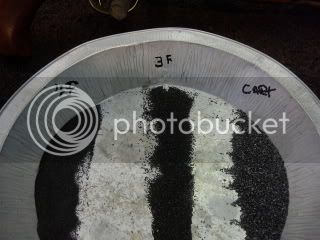The problem with 4f and Null B getting soupy is not from priming it and shooting it right away. It is from priming it and then walking in the forest with it for more than about 1/2 an hour in humid conditions. As long as you check your pan about every half and hour or so, brush out the old and replace it, you're fine.
I personally use 3f for both my prime and main charge. However, a lot of folks where I lived in Virginia for 10-years (you get "real" humidity there) would use the finer granulations at the club shoots but not to hunt with just because of the humidity and BP soup problem.
I've never had the problem, although I would refresh my 3f from time to time as a preventive measure too. I also made a habit when I first started muzzleloading of hanging a strip of pillow ticking off the strap of my shooting bag next to my pick and brush to clean the pan and frizzen as needed. A little spit and a wipe works wonders.
I think Pletch has a valid point about water absorption with the fouling as opposed to the powder by itself. The fouling certainly seems to absorb moisture at a much faster rate. I've done a lot of reenactments where you will sometimes fire 40 shots within a short engagement and, if you've ever fired many blanks, you know how much worse fouling is with blanks than it is with live firing.
As long as I wipe the pan, the flint, and frizzen every few shots, I have no problems with spark, ignition, or flash in the pan. So I've made a habit of wiping them whenever I have a moment or two to do so. When wiping the flint, wipe the underside and the top and wipe it towards the front edge of the flint. DO NOT run the ticking and your finger sideways across the flint edge because it WILL cut you. if you think of it as cleaning off the sharp blade of a knife, you'll do OK.
As I said, I prefer to use 3f for prime and main charge but there's no reason not to use the finer granulations if you prefer as long as maintain your lock properly - check your prime every half hour or so while hunting, and wipe out the pan, flint, and frizzen every few shots.
I'll continue to use 3f because it's simpler to do so - one horn instead of two to carry, no worries about malfunctioning springs or clogged tube in a priming horn, no extra can for finer granulation to purchase, and no worries about historical correctness of my kit if you are concerned about that (it certainly is a concern for reenactments). Plus, it works perfectly fine for me and I am one of those "if it ain't broke, don't fix it" kind of guys.
Twisted_1in66 :thumbsup:
Dan





